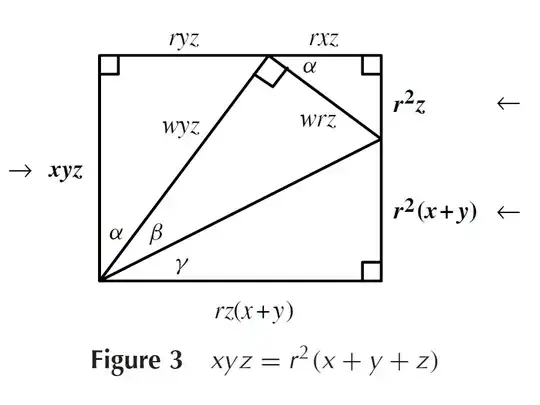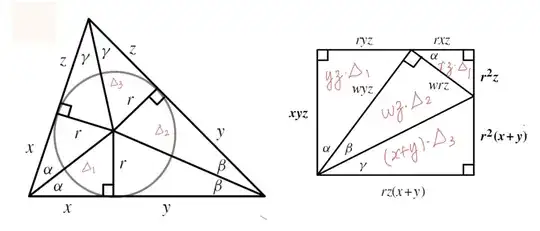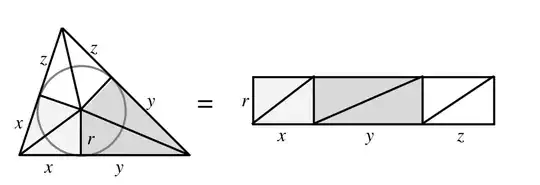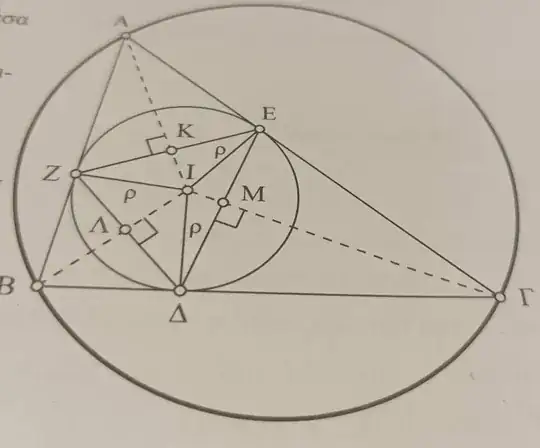Today I was studying geometric inequalities and I saw this inequality: $$R \ge 2r$$
Unfortunately, the book did not provide any proof or further explanations. So I just did a little research about it. I found that the name of inequality is euler triangle inequality and there was a simple proof about it.
If $O$ is circumcenter of $\triangle ABC$ and $I$ is incenter of it and $OI=d$ then $$d^2=R(R-2r)$$ $R$ is circumradius and $r$ is inradius. from this identity we can drive $R-2r\ge0 \Rightarrow R\ge2r$
but I did not like this proof. So I continued my research till I found this from MAA.
First, the author proves 3rd lemma and using them simply proves the inequality. My problem was on understanding second lemma. Here is a description about it:
The second, whose proof uses a rectangle composed of triangles similar to the right triangles in FIGURE 1(b), expresses the product $xyz$ in terms of the inradius $r$ and the sum $x + y + z$.
Figure 1(b)
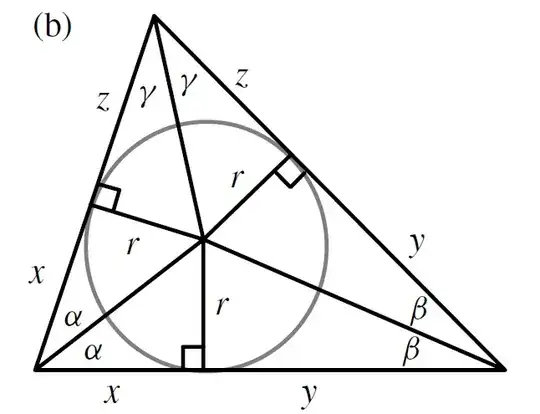
And the lemma proof
LEMMA 2. $xyz = r^2(x + y + z)$.
Proof. Letting $w$ denote $\sqrt{r^2+x^2}$, we have
I can't understand what sides are given in figure 3 and I can't reach $r^2(x+y)$ (I tried using Pythagorean but I was not succesful).
